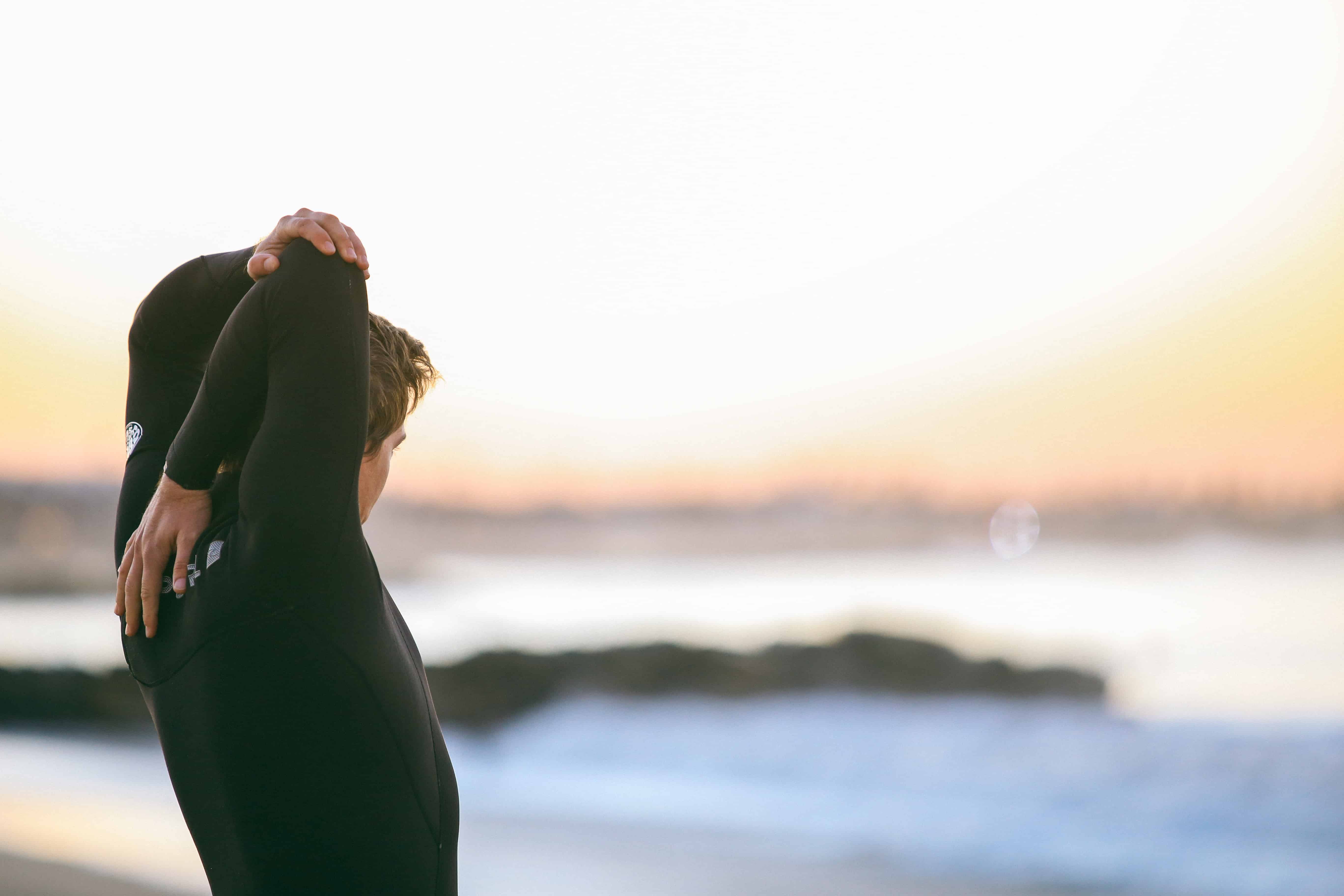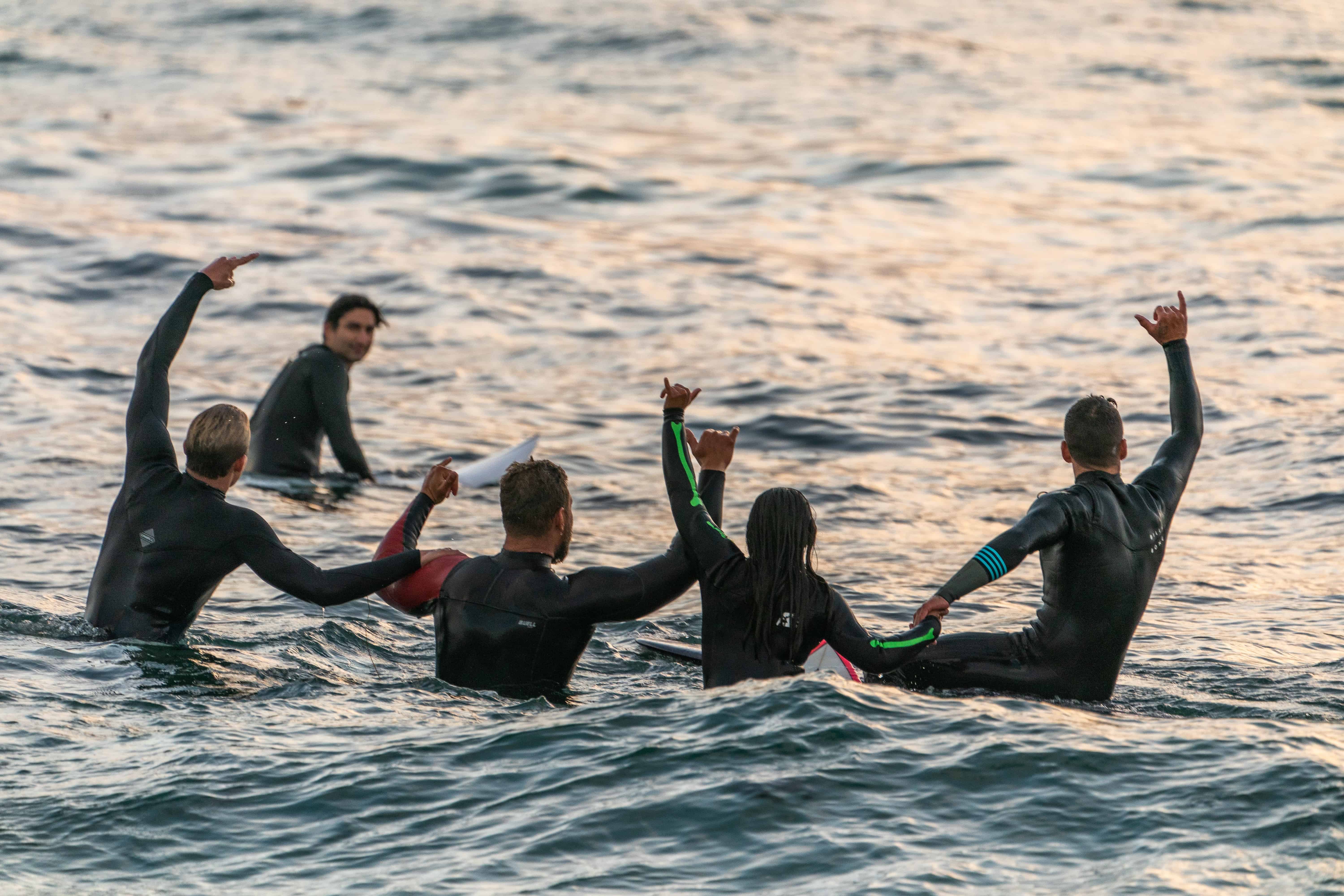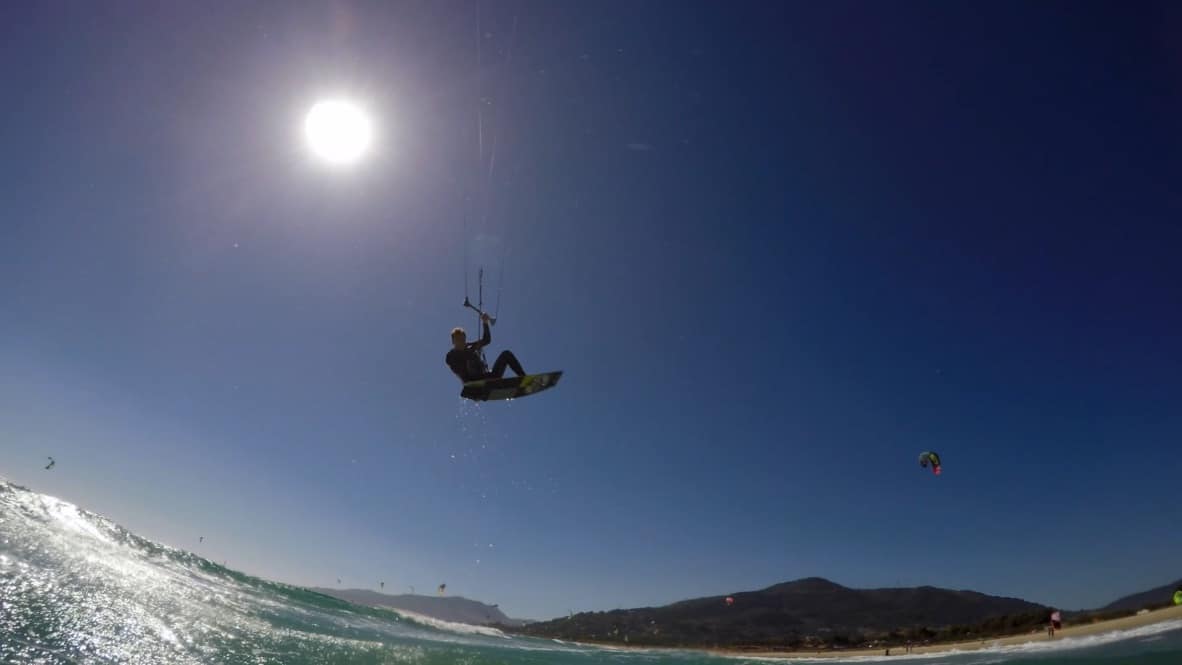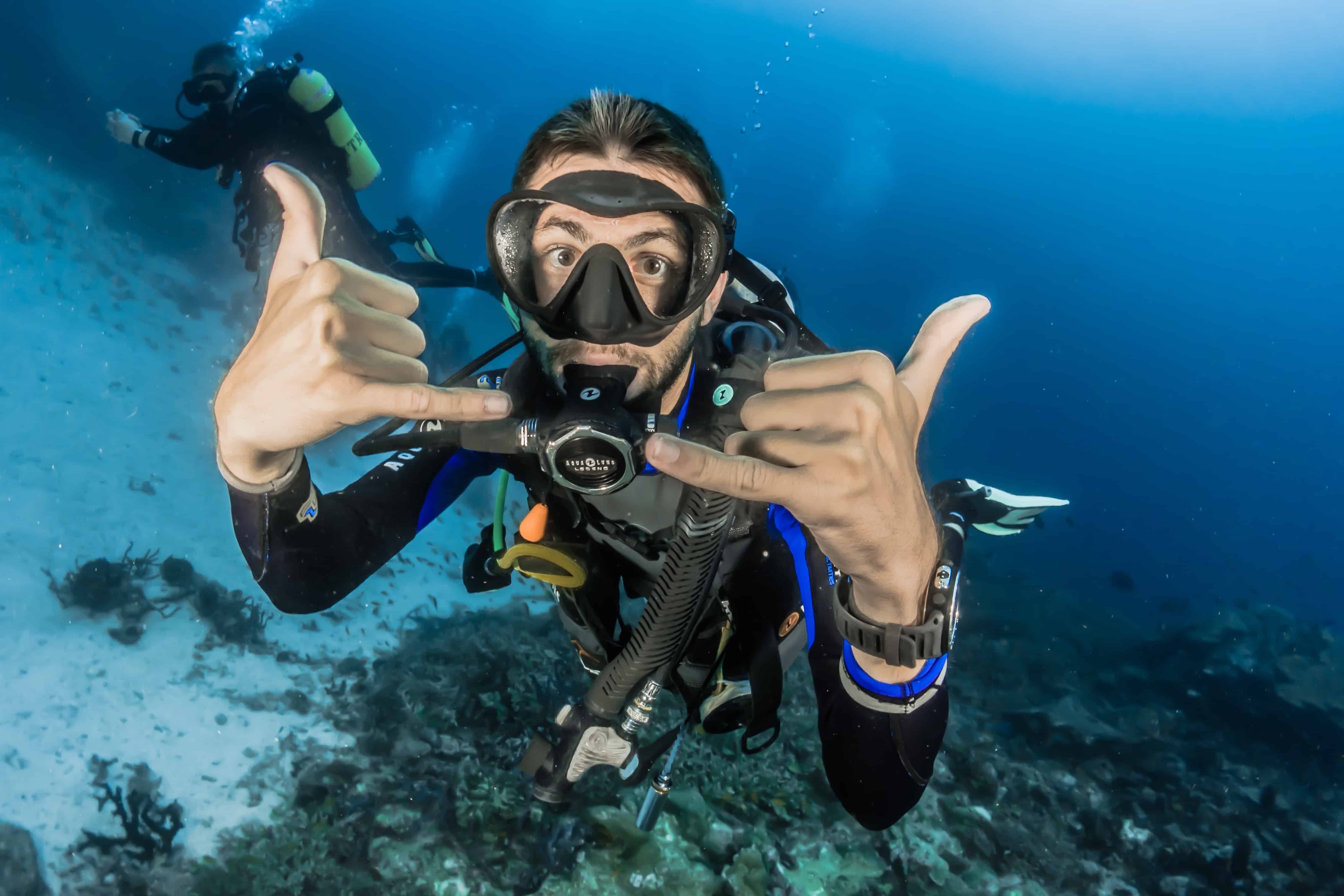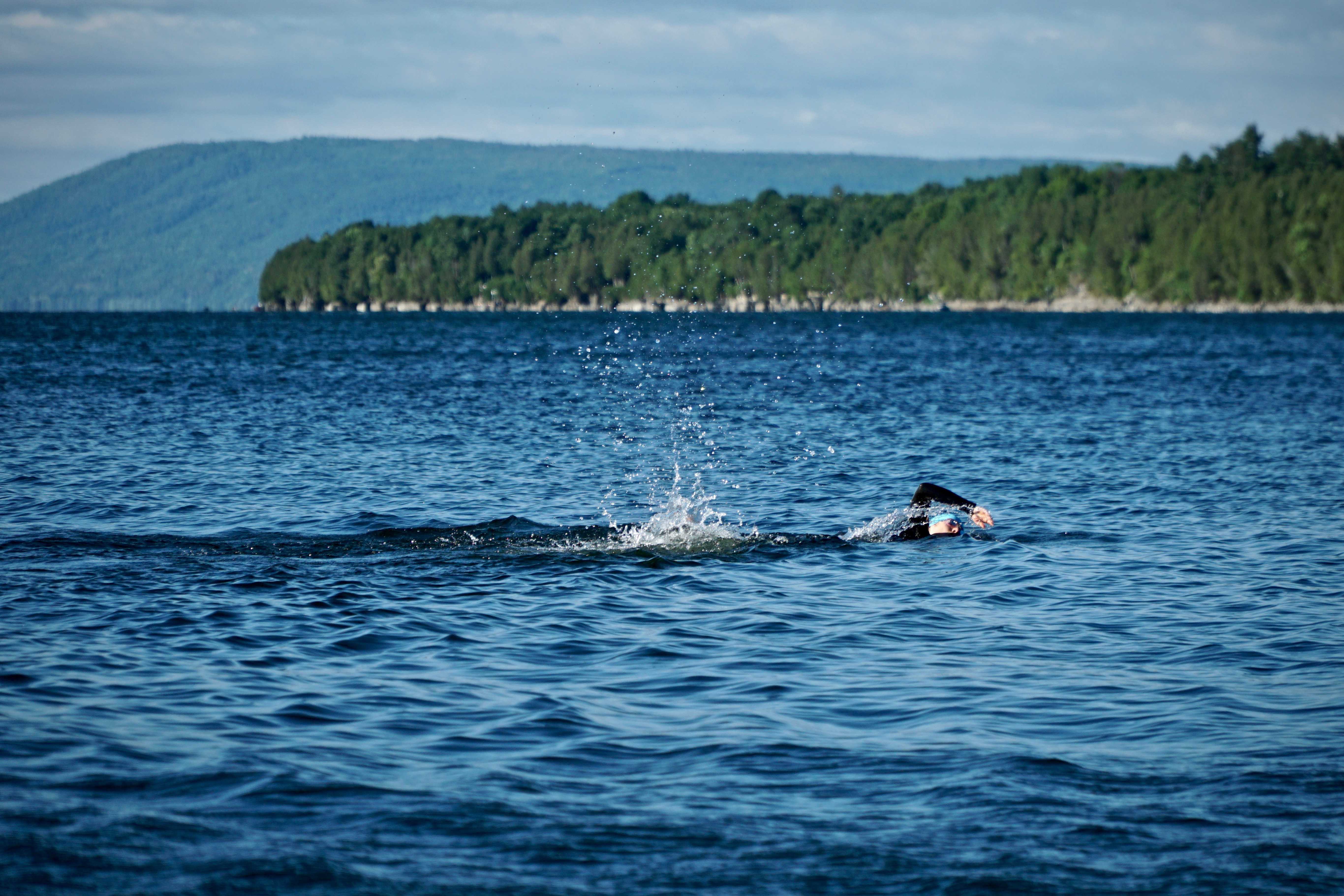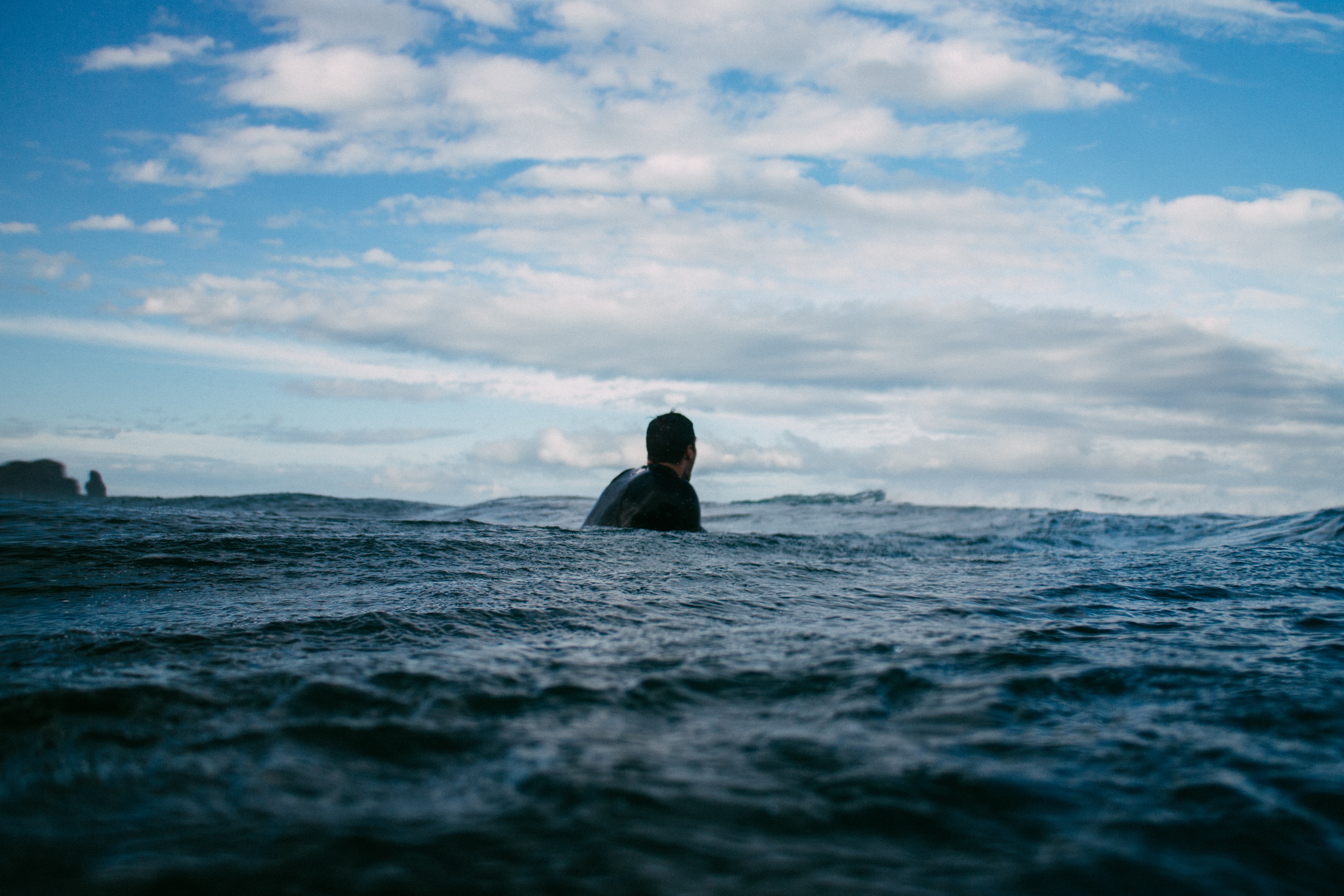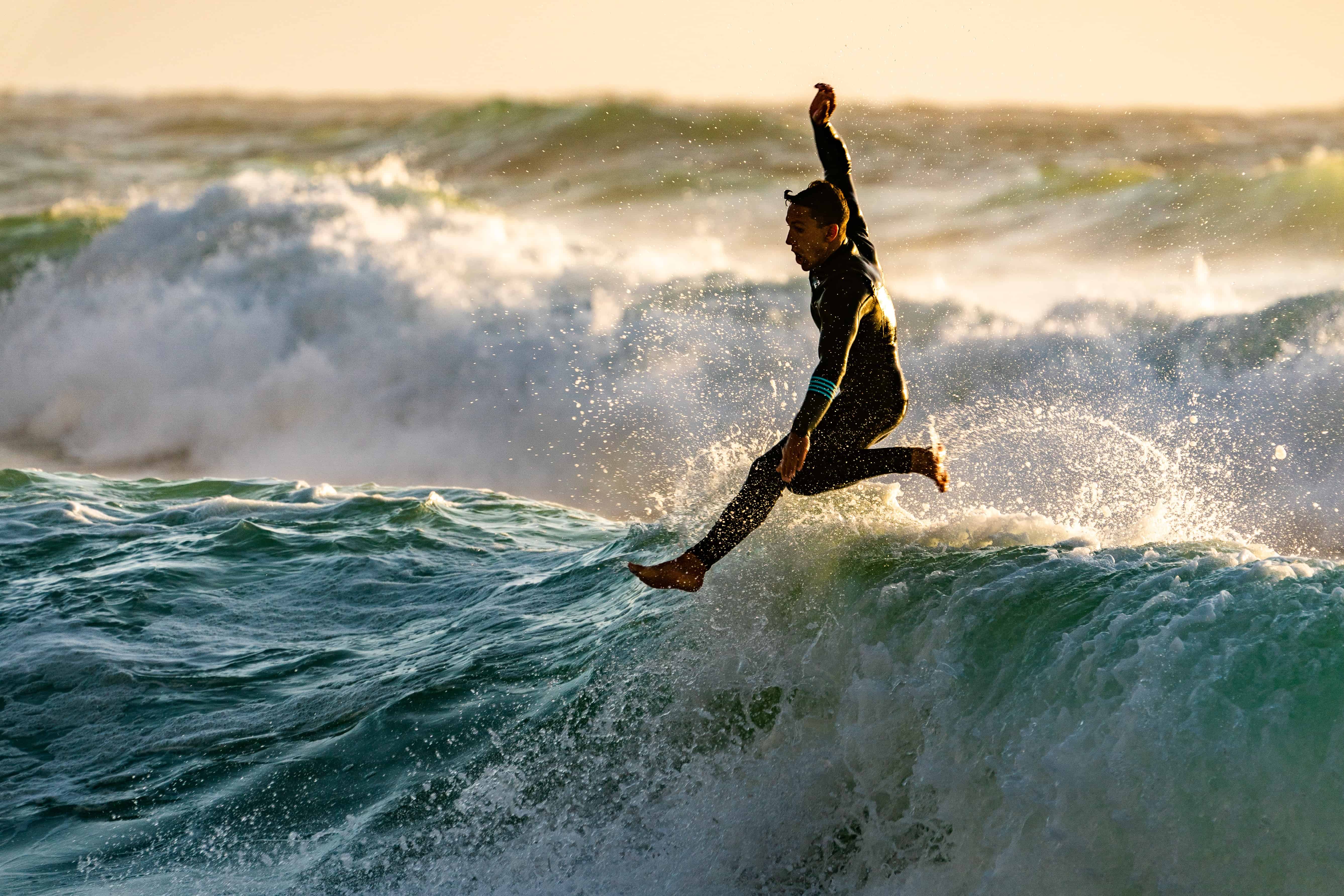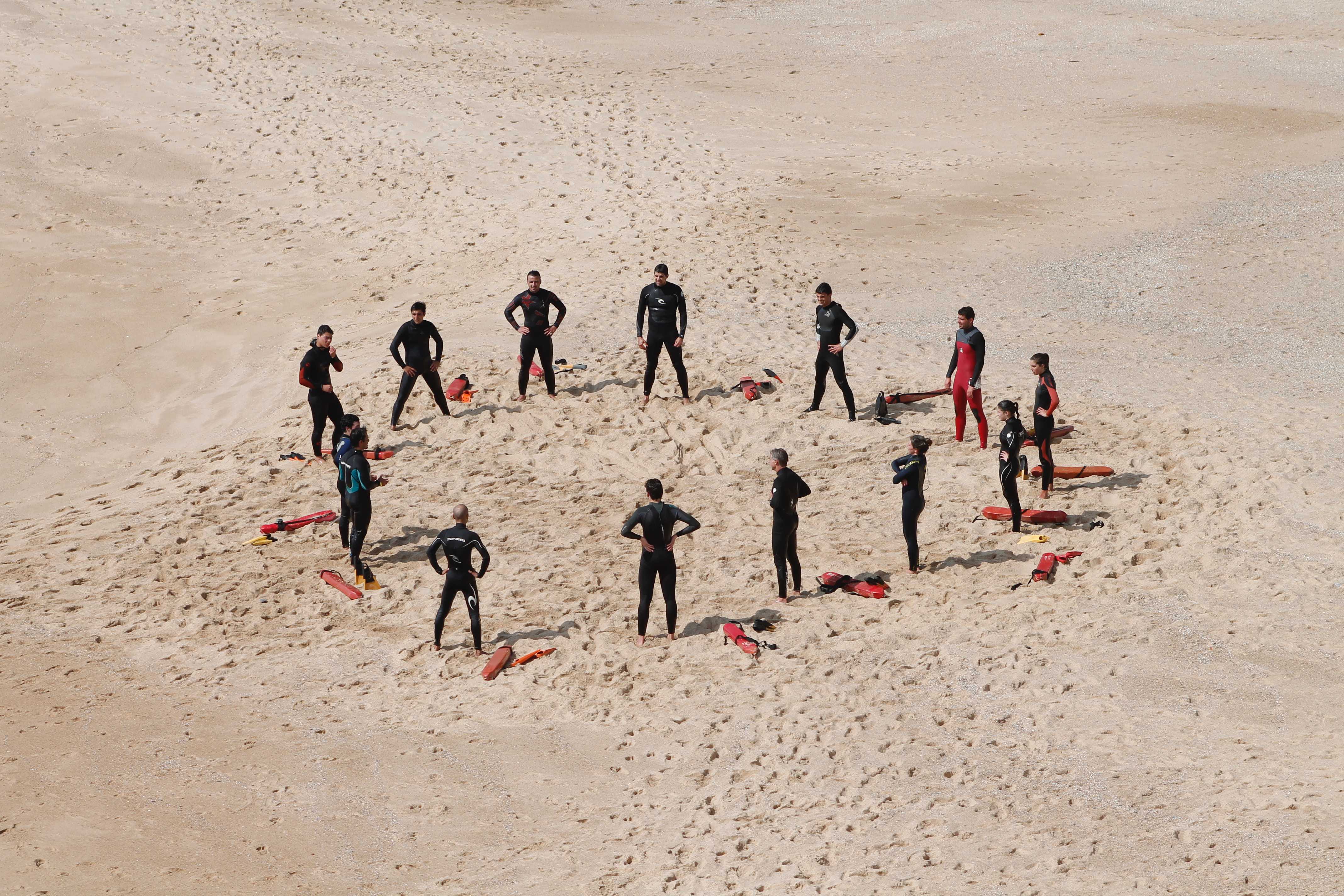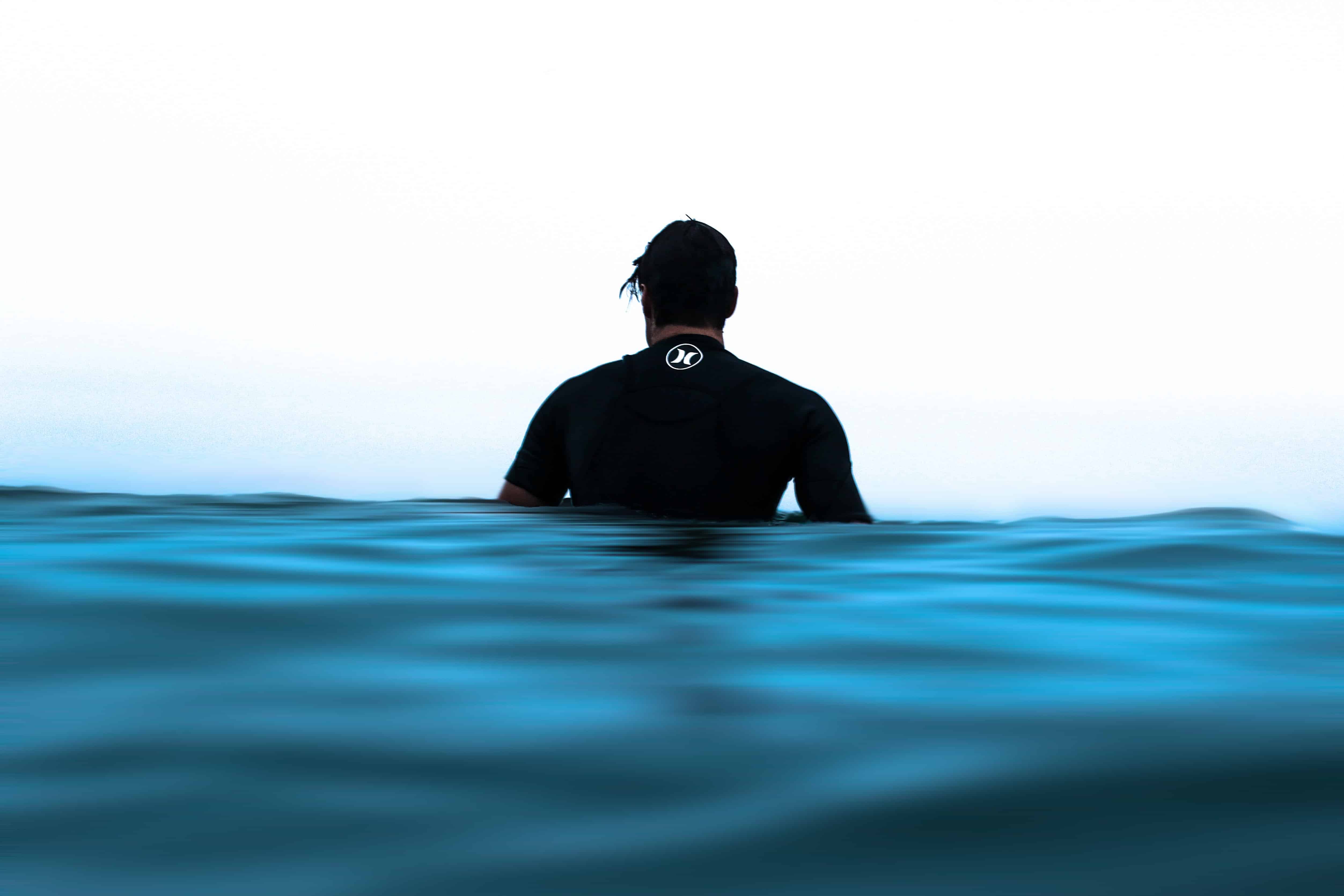Wetsuit thickness and wetsuit water temperature guide
This is how you find the right neoprene thickness for your needs, season and much more
Do you ask yourself – what wetsuit thickness do i need? What wetsuit for what water temperature is best for me? What is a 3/2 wetsuit? We have written the ultimate guide to wetsuit thickness and water temperature for you. You’ll also find wetsuit temperature charts/wetsuit thickness charts for each water sport to help you make the best decision when buying your wetsuit.
Wetsuit Finder
Simply enter your dimensions and find your perfect fit
Wetsuit thickness Basics
The wetsuit thickness influences its thermal properties and flexibility. In addition to our physical condition, both are decisive for the fatigue factor.
Both cooling down and overheating lead to a high loss of power. You therefore save a lot of energy with good thermal properties and thus suitable thickness. So when you buy a wetsuit, make sure you have the right balance of thickness and flexibility. If in doubt, however, you should choose the warmer and somewhat thicker wetsuit version. You lose a little flexibility and have a little more effort while moving, however, cooling down is usually easier than warming up again. And there’s nothing more frustrating than getting out of the water in the middle of a perfect session because your whole body trembles like in a freezer.
The risk of injury is also lower with a little warmer wetsuits. Muscles, ligaments and tendons are heated and therefore more flexible. And your mom would also be happy, because you do not catch a cold so fast
Note: The thicker the neoprene, the warmer and less flexible the wetsuit is.
The wetsuit thickness is always given in millimetres (mm). The specification is made with two numbers. 3/2 mm means, for example, that the neoprene has a thickness of 3 mm on the torso and 2 mm on the legs and arms. Most wetsuits have a difference of 1-2 mm, because the warmth effect is more important on the body and the flexibility on the arms and legs.
Surfing wetsuit temperature guide & chart
What is special about surfing is that you spend most of your time in the water. Either you paddle or sit on the board waiting for the next hot ride. Therefore you are less exposed to the wind and the outside temperature like kitesurfing, wakeboarding or windsurfing. In this respect there are small differences.
| Water temperature in °C/°F |
Wetsuit Thickness | Destination |
| > 24 °C > 75,2 °F |
No wetsuit required, Lycra or Rashguard as UV protection etc. |
Bali, Sri Lanka, Hawaii, Phillipines |
| 22 – 24 °C 71,6 – 75,2 °F |
1 – 2mm neoprene top |
Mediter. Sea or Ocean City/USA in summer |
| 19 – 22 °C 66,2 – 75,2 °F |
2mm shorty or springsuit |
Mediter. Sea Mid Season, Gold Coast / AUS in winter |
| 17 – 20 °C 62,6 – 68 °F |
2 mm fullsuit, Long John or Jane |
Portugal Algarve in summer, Jeffreys Bay / South Africa |
| 13 – 18 °C 55,4 – 64,4 °F |
2 mm or 3/2 mm fullsuit |
Atlantic Southern Spain, Algarve, France in Winter, Cape Town |
| 10 – 14 °C 50 – 57,2 °F |
4/3 mm fullsuit + 3 mm boots + 2 – 3 mm gloves + optional hood or cap |
California / USA in winter, England, Ireland |
| 8 – 12 °C 46,4 – 53,6 °F |
5/4 mm hooded fullsuit + 5 mm gloves + 5 mm boots |
Cornwall / England in winter, Vancouver Island / Canada |
| < 8 °C < 46,4 °F |
6/5 or 6/4 hooded fullsuit + 7 mm gloves + 7 mm boots |
off to Antarctica |
Kitesurfing, Windsurfing, Wakeboarding, Waterskiing, SUP wetsuit temperature guide & chart
In Kitesurfing & co. most of the time you are above the water surface. With bloody beginners this can look a bit different However, this stage should not influence the decision regarding the wetsuit thickness. So you are permanently exposed to the wind and the outside temperature. Most of the time you are wet while riding which is a cooling factor as well. The intensity of the sunlight has a slightly greater influence than in surfing and even more than in diving. From experience you need a little thicker wetsuit than for surfing for the mentioned water sports.
| Water temperature in °C/°F |
Wetsuit Thickness | Destination |
| > 25 °C > 77 °F |
No wetsuit required, Lycra or Rashguard as UV protection etc. |
Bali, Sri Lanka, Hawaii, Phillipines, Brazil, North Carolina in summer |
| 22 – 24 °C 71,6 – 75,2 °F |
2 mm neoprene top or shorty |
Mediterranean Sea in summer, Florida except summer |
| 19 – 23 °C 66,2 – 73,4 °F |
2 mm Shorty or Springsuit or 3/2 mm fullsuit |
Mediterranean Mid Season,California Gulf of Mexico, Cape Town in summer |
| 15 – 20 °C 59 – 68 °F |
3/2 mm fullsuit | Tarifa / Spain |
| 12 – 15 °C 53,6 – 59 °F |
4/3 mm or 5/3 mm fullsuit + 3 mm boots + 2 – 3 mm gloves + optional hood or cap |
San Francisco, Cape Town in winter |
| 7 – 13 °C 44,6 – 55,4 °F |
5/4 mm or 6/4 mm hooded fullsuit + 5 mm gloves + 5 mm boots | England, Netherlands in winter |
| < 7 °C < 44,6 °F |
6/5 or 6/4 hooded fullsuit + 7 mm gloves+ 7 mm boots | off to Greenland |
Scuba diving wetsuit temperature guide & chart
When diving it depends again almost exclusively on the water temperature and the depth of the dives. One is almost permanently under water and is usually some or many meters away from the water surface. Therefore sun, wind and outside temperature have only a minimal influence.
| Water temperature in °C/°F |
Wetsuit Thickness | Destination |
| > 28 °C > 82,4 °F |
Dive skin | Caribbean, Indonesia, Maldives, French-Polynesia |
| 25 – 27 °C 77 – 80,6 °F |
2 mm shorty or 1 mm fullsuit |
Mediterranean Sea in summer, Egypt |
| 22 – 24 °C 71,6 – 75,2 °F |
3 mm fullsuit | Galapagos, Margate / South Africa |
| 17 – 21 °C 62,6 – 69,8 °F |
5 mm fullsuit | South Africa, Atlantic southern Europe in summer |
| 10 – 16 °C 50 – 60,8 °F |
7 mm fullsuit – 8/7 mm semidry |
Atlantic South Spain / Algarve in Winter, Cape Town |
| 5 – 10 °C 41 – 50 °F |
8/7 semidry or drysuit |
British Columbia/Canada and Norway in winter |
| < 5 °C < 41 °F |
drysuit | off to the Arctic |
Triathlon/open water swimming wetsuit temperature guide & chart
While swimming you are under water with the main part of your body. Only arms and legs are regularly moved out of the water. However, you always move just below or slightly above the water surface. Thus water temperature is decisive. The outside temperature, wind and sunlight have a relatively small influence. In the end it depends on speed, so it is recommended to buy a wetsuit that is as thin as possible and therefore just sufficient for the given water temperature.
Note: You can also use a common surf wetsuit for swimming/triathlon, however it is not ideal. It depends on your level and ambition what kind of wetsuit you should buy in the end. Triathlon wetsuits are relatively thin and have a very good buoyancy at the same time.
| Water temperature in °C/°F |
Wetsuit Thickness | Destination |
| > 20 °C > 68 °F |
No wetsuit required or 1 mm shorty or fullsuit (!competition regulations!) |
Hawaii Ironman, New York or Noosa Triathlon |
| 17 – 20 °C 62,6 – 68 °F |
1 mm fullsuit | London Triathlon in summer, Challenge Roth / Germany |
| 13 – 17 °C 55,4 – 64,4 °F |
2 mm fullsuit | San Francisco Triathlon Escape from Alcatraz or Wildflower, Wales Triathlon |
| 8 – 13 °C 48,2 – 57,2 °F |
3 – 4 mm fullsuit | Norseman Triathlon in Norway |
< 8 °C < 46,4 °F |
4 – 5 mm fullsuit |
Neptune steps in Glasgow |
Note to all charts: Individual cold sensitivity, weather (wind force, sun/clouds, outside temperature etc.), water sport, manufacturer quality can vary considerably and so can do the individual needs regarding the wetsuit thickness.
Triathlon wetsuit regulations for competition
Firstly we would like to make clear that the following is no legal advice and to get all information, please check the websites of your Triathlon association!
General regulations:
– The maximum thickness allowed in triathlon competitions is 5 mm.
– A wetsuit may cover any part of the body except the face, hands and feet
– Gloves are not allowed
– Propulsion devices are not allowed
– If a cap is not provided by the race management, you can wear your own one.
ITU (International Triathlon Union):
Elite, U23, Junior & Youth athletes
|
Swimming distance |
Forbidden if more than | Mandatory |
| < 1500 m | 20 °C/68 °F | < 15.9 °C/60,62 °F |
| > 1500 m | 22 °C/71,6 °F | < 15.9 °C/60,62 °F |
Age Group athletes
| Swimming distance | Not allowed if more than | Mandatory |
| < 1500 m | 22 °C/71,6 °F | < 15,9 °C/60,62 °F |
| > 1500 m | 24,6 °C/76,28 °F | < 15,9 °C/60,62 °F |
USAT (USA Triathlon):
Age Group athletes
These athletes may wear wetsuits at max. 25,56 °C/78 °F. Between 25,56 °C/78 °F – 28.89 °C/84 °F you are allowed to wear a wetsuit, however you shall not be eligible for awards or prizes.
Elite athletes
| Swimming distance | Forbidden if more than | Mandatory |
| < 3000 m | 20 °C/68 °F | < 15,9 °C/60,62 °F |
| > 3000 m | 22 °C/71,6 °F | < 15,9 °C/60,62 °F |
Inner lining in your wetsuit
Some extra warmth? In several wetsuits, thermo textiles are processed in the form of fibres. The fibres contain minerals and are activated by body heat. They convert this into infrared energy, which achieves a good heating effect. This expands the range of application. If, for example, you have an inner lining for a 5/3 mm wetsuit, you can also wear it in waters where a 6 mm wetsuit is actually recommended.
Even the own performance should be improved thereby. The thermal material is usually worked into the wetsuit in the area of the upper body. Quicksilver and XCEL work with this technology, whereby the thermal properties of the respective models differ again in the ratio flexibility/thermal strength.
CHECKLIST wetsuit thickness
– What is the water temperature of my destination at the chosen time of year?
– What is my cold sensitivity like?
– Is it a high quality wetsuit?
– What is my water sport?
– Is there an inner lining?
— Wetsuit Finder
Find you perfect fit and order it today, stop searching, try your wetsuit on
Wetsuit Finder

